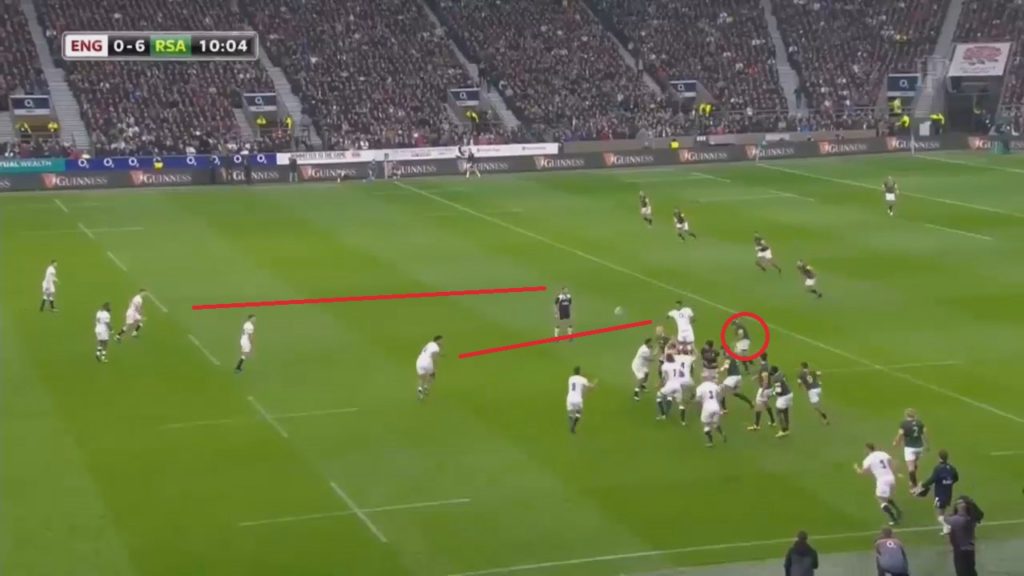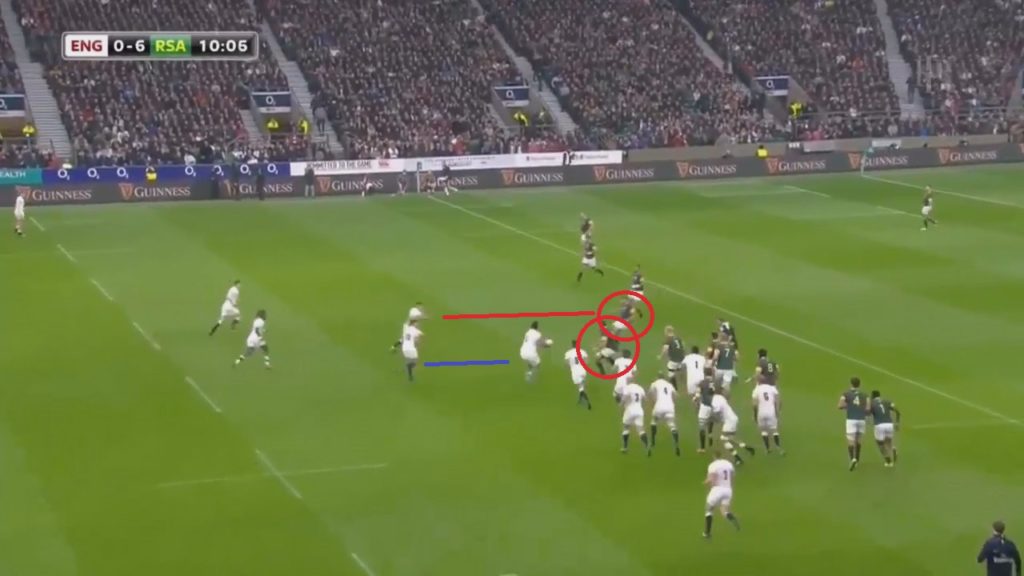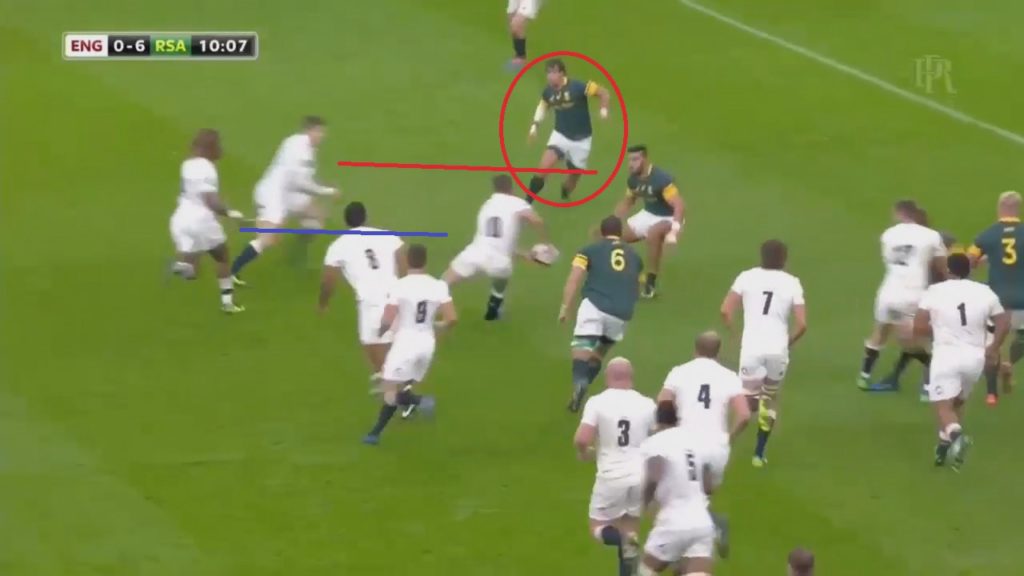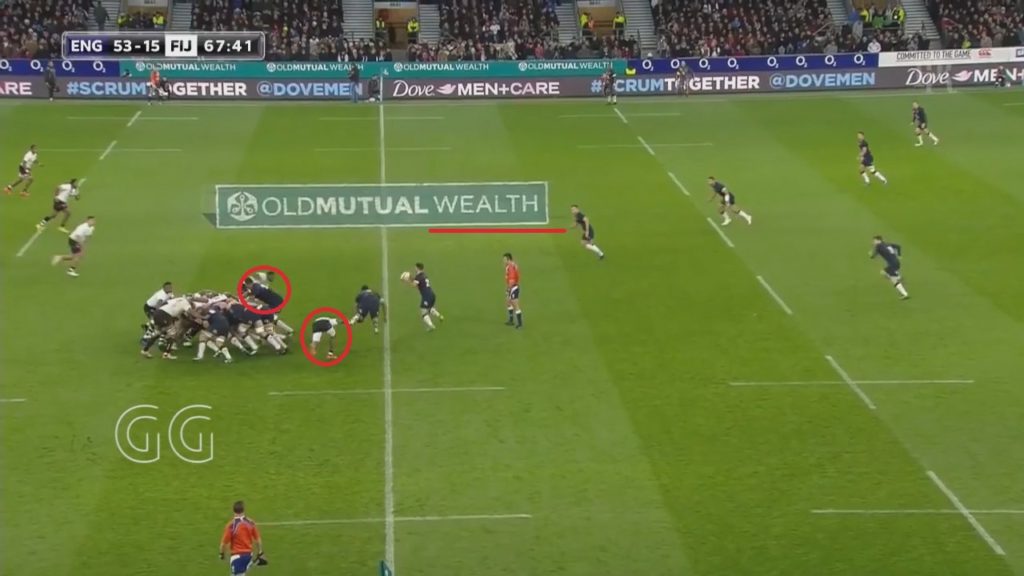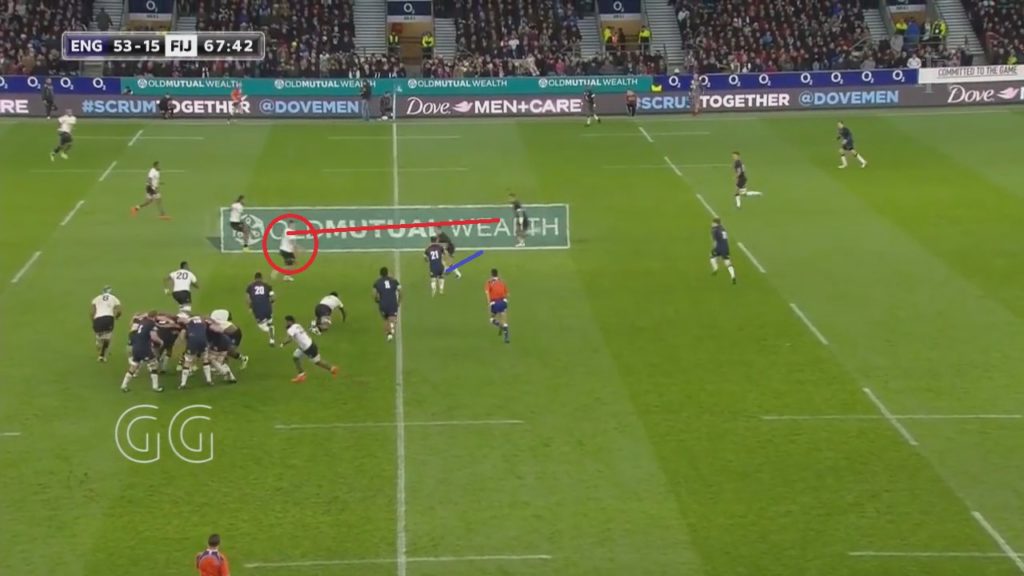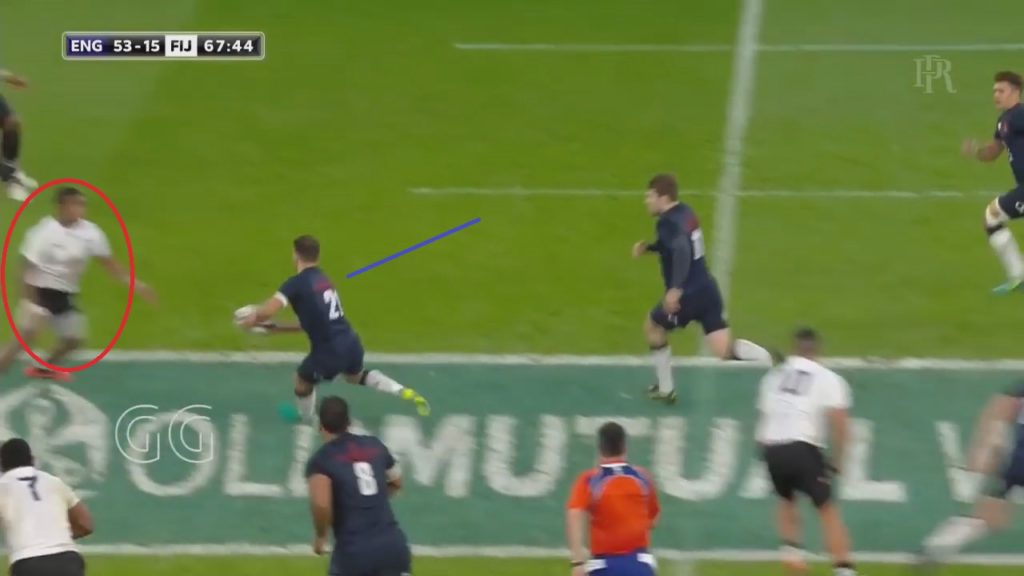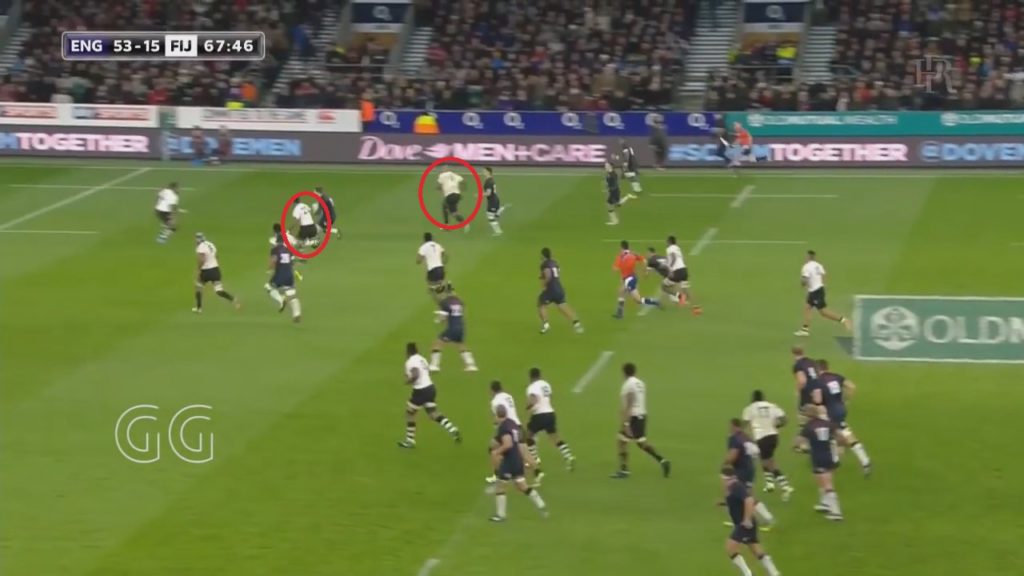The pressures of winning test matches, along with the set piece fiasco of late, have led to a decrease in 1st phase strike moves. Most test sides, at least in the northern hemisphere, have started taking the safer option of creating space through phase play, more often than not crashing up a runner first to set a platform they can build from. However with England, much as he did with Japan, Eddie Jones has started to develop a more Southern Hemisphere attitude of attack space no matter whern it occurs.
First phase attack is one of those occasions when there is genuinely space to exploit, as such it's one of the best times to utilise a strike move. There is a whole pitch to attack and only the backs to defend it. Over the Autumn Internationals we have seen England looking to exploit that 1st phase space, and we’re going to look at two very good attacking moves, in which England use the playmaking ability of George Ford among others to make the right decisions and find that space.
We’ll start with Jonny May’s try out wide against South Africa.
This well worked backs move, off the tail off the lineout, used excellent “dummy” runs from the 2 centers to stop the drift defence from covering. The first players England need to hold are Du Toit and Alberts at the tail of the lineout.
This is achieved by throwing long to Lawes taking out the back pod. who plays off the top to Ben Youngs. Youngs in turn fixes Du Toit before passing to Billy Vunipola on the charge who will hold the back row (Alberts covering around) with his ball carrying threat. Once he is happy Alberts is committed to him he passes the ball behind the lead runner of Owen Farrell to George Ford.
As we can see here he reacts well and plays out the back to Ford. If Lambie doesn't step in for the tackle on Farrell then he takes the short pass option to put Farrell through the gap on the left
.
Ford now has a decision to make when watching the 2 South African centers. First his run needs to draw the attention of De Allende (again if De Allende doesn’t bite in he can take the gap) it does this and the run of Elliot Daly turns Venter in to tackle him. Venters hips turning in is Ford's visual cue and he passes behind Daly to Yarde creating a simple 3 on 2 to put May away.
Taking and stopping chances at the highest level is all about executing the simple things well, so while England look to finish the three on two the cover defence of Combrink puts Yarde in two minds. Yarde attacks the space at pace though and this is enough to force Combrink to commit to the tackle. Again as soon as Combrink bites Yarde passes to Brown and it’s a 2 on 1.
With Combrink committed Le Roux has to put maximum pressure on Brown in the hope that his pass to Jonny May will be poor. Brown holds his composure and gets the pass away to May who uses his pace to squeeze in at the corner despite the efforts of Paige and the cover defence.
The key in all of this is England’s lead runners remaining an option for the ball carrier who then makes a the correct decision by reading the defence, with both lead runners we can see South Africa have to commit to the tackle and make genuine hits on both Farrell and Daly. Additionally the accuracy of passing, in front of the men allowing them to run onto the ball, ensures the defender has been drawn before the pass is made (Yarde’s carry being an excellent example).
It’s an excellent example of attacking play and shows what is possible with good decision making and a full pitch to work in.
I am delighted to say this was not a one off and against Fiji England displayed another move which, while it did not result in a try, gained lots of ground and presented a genuine scoring chance for England. It was an almost identical move only this time from the opposite side and off the back of a stable scrum.
Again it all starts with Billy Vunipola, this time from number 8, he picks and pops to Danny Care who is looping round preserving valuable space for the backs first taking out the scrum half, Matawalu and the openside (helped by some holding from Robshaw).
Care then passes it on to Ford who again uses his decision making and vision to pick out the right runner from his two options, Teo coming short or Care on the loop (Below). You can see in the image that Matavesi has read the play and is hoping for inside support so he can drift but as the cover defence is slow to react he is forced to step in on Ford.
Once he has stepped in the centre Vulivuli is also forced to step in covering the powerful run of Te’o.
With Care on the loop and Daly on his shoulder he exploits the turned in defence, drawing Tikorotuma and popping to Daly on the burst.
Importantly, we can also see that if Nadolo had stepped in he still has the wider option of Slade, who could potentially use the two players outside him to beat the fullback. Intelligent defending from Nadolo sees him tread water shutting out Slade and the pass is made to Daly who attacks the space at speed.
Once Daly has broken the line, he looks for the pass outside. But as it's been cleverly cut off by Nadolo backing off the tackle it's not an option. Daly now can’t step back inside as the cover defence has that option covered so he uses footwork to try and beat the defender hoping to either score himself or draw in Nadolo to free up the pass. As it is he is just tap tackled and the attack is slowed with England having to recycle the phase.
Although this did not result in a try on this occasion England make a lot of ground and created an opportunity to score. Indeed they are only kept out by some clever scrambling defence from Fiji.
It’s exciting play from a rejuvenated England side, and that eagerness to score directly from first phase is something we’ve seen them building in since the Six Nations. Here is hoping there is more of this to come and that other sides will begin to follow suit moving away from the NH trademark of milking penalties at set piece time.
About the Author:
I am a young rugby player and through one of my coaches who also works with Wasps have got into the idea of being an analyst. As a player reading the game is my main strength and I feel this could be well utilised in sports analysis. I now have 2 part time paid analyst roles on top of my 9-5 for Universities as well as being approached to help out with the local county U20s side. I am hoping to develop my analysis skills further through pieces such as this.
Author: The Dead Ball Area
Graeme Forbes has run The Dead Ball Area since 2014.
You can find his material on Green and Gold Rugby, Rugbydump Coaching and Youtube. You can also find him randomly arguing with people on Twitter.

